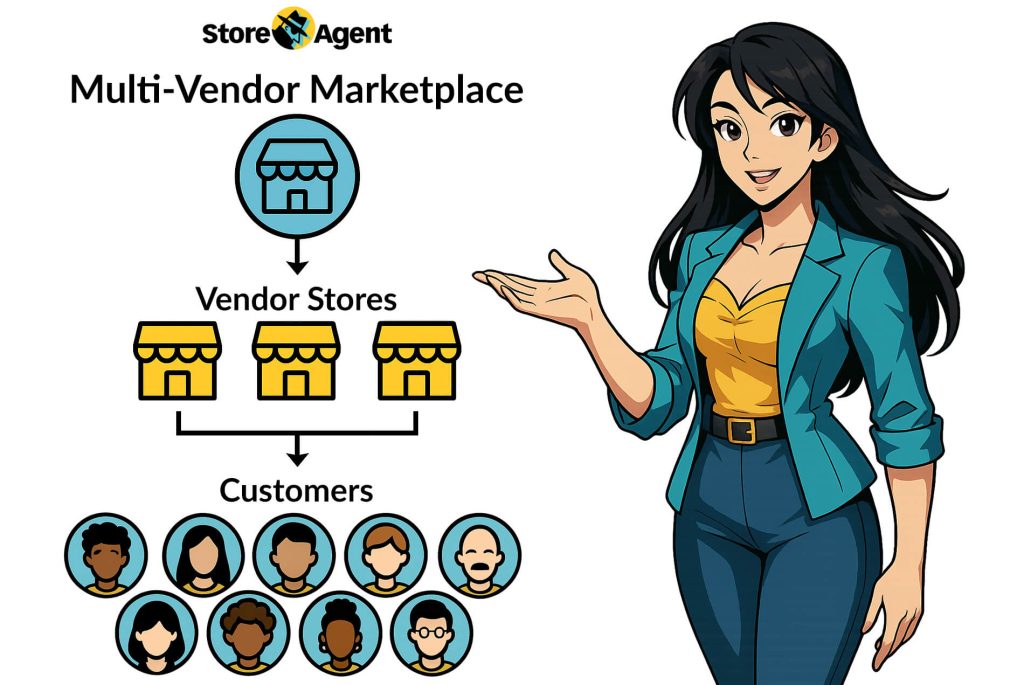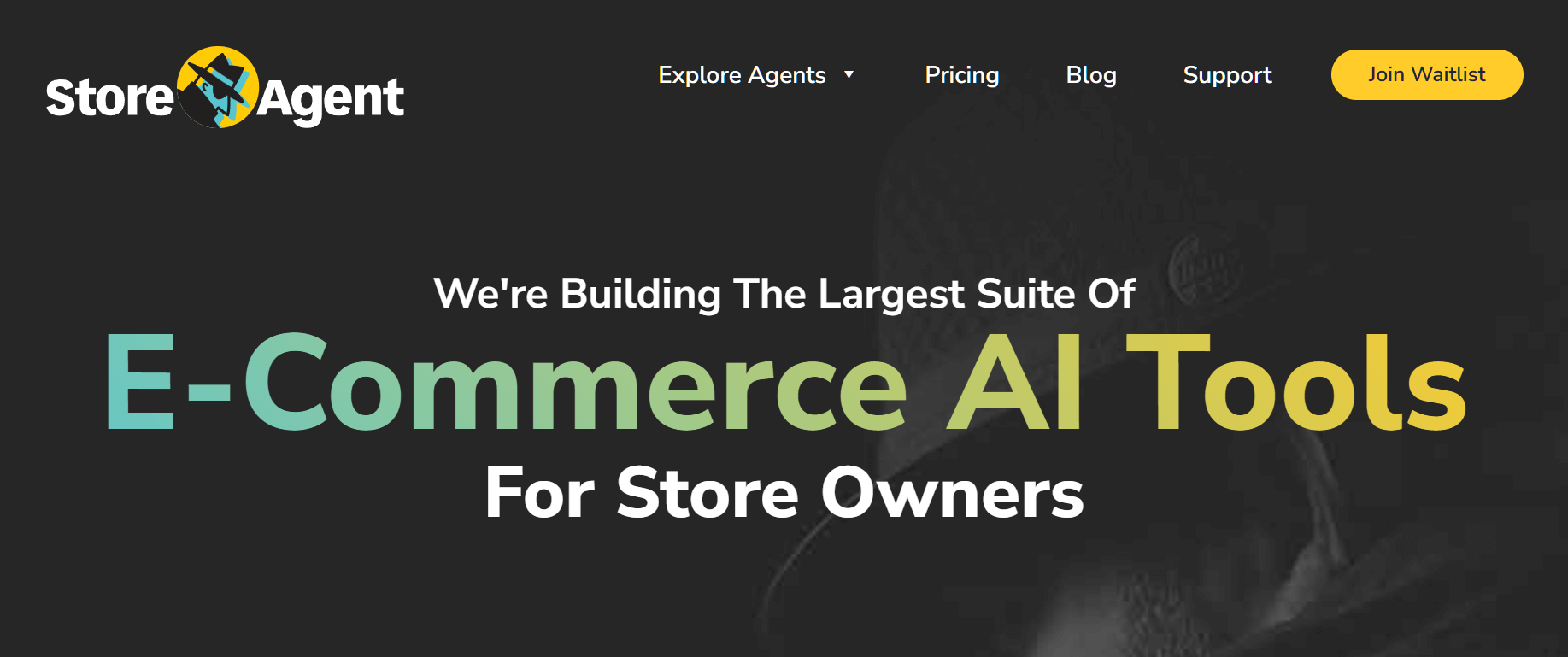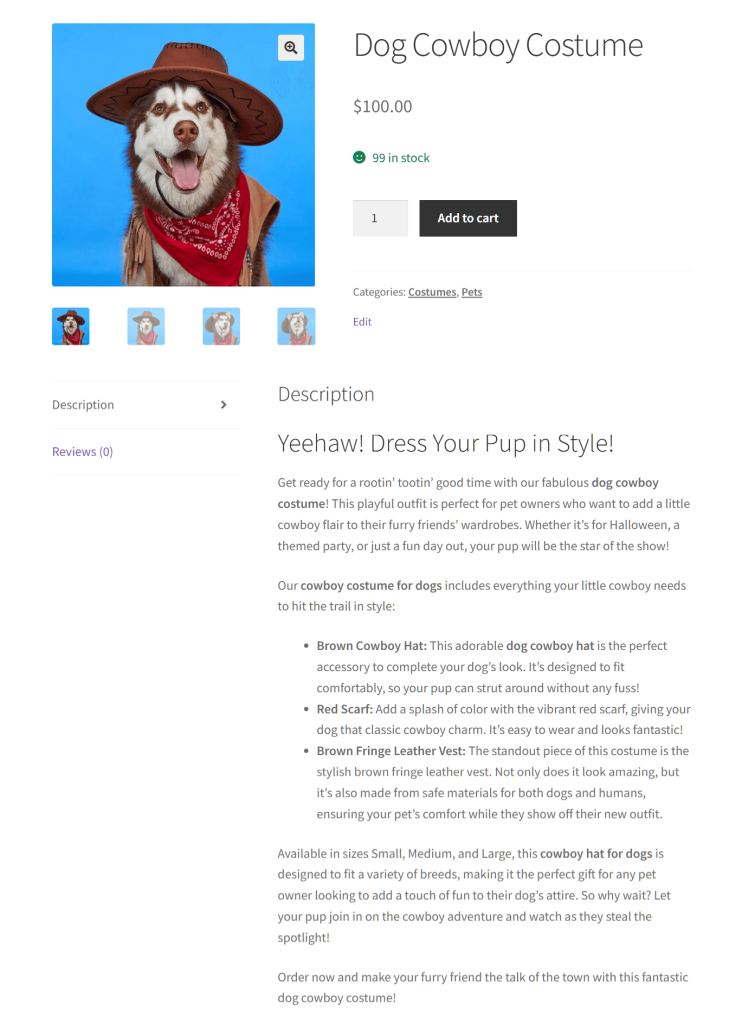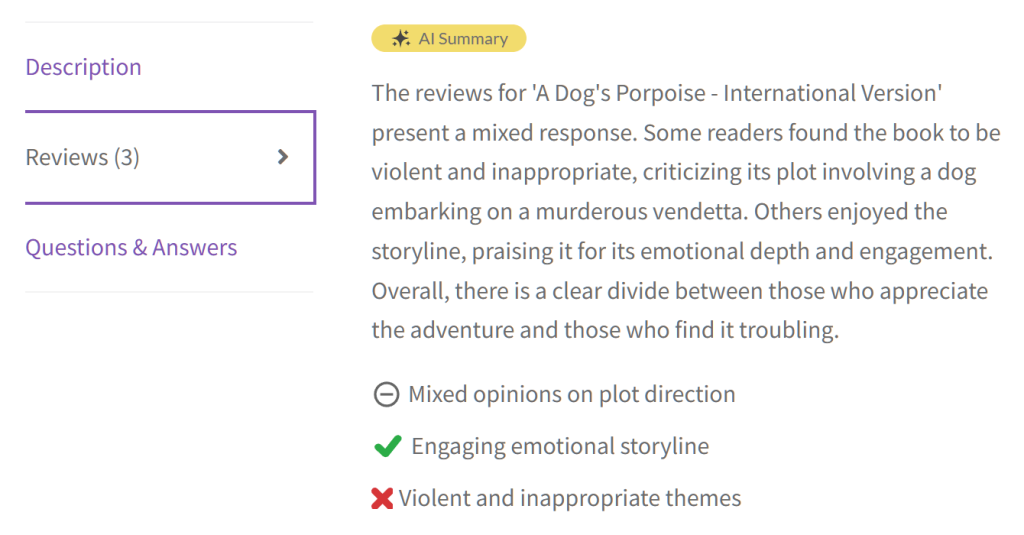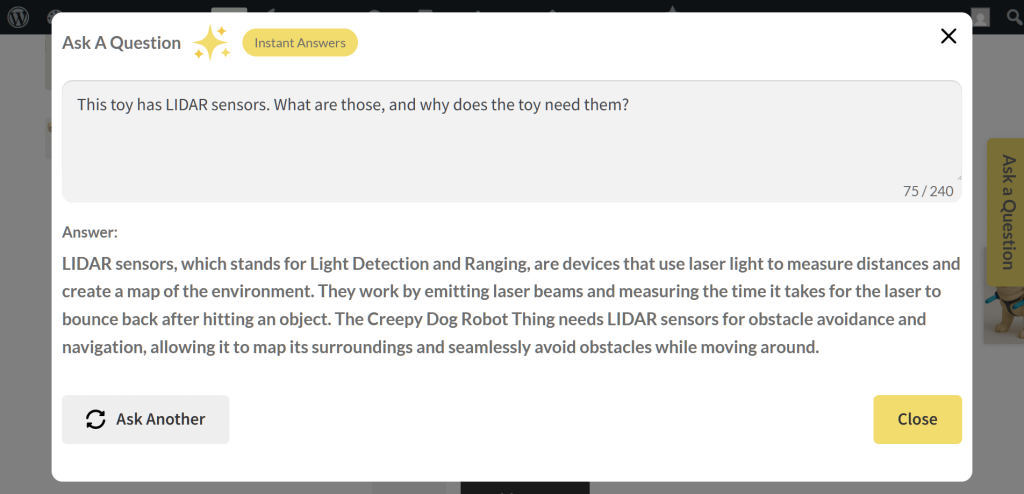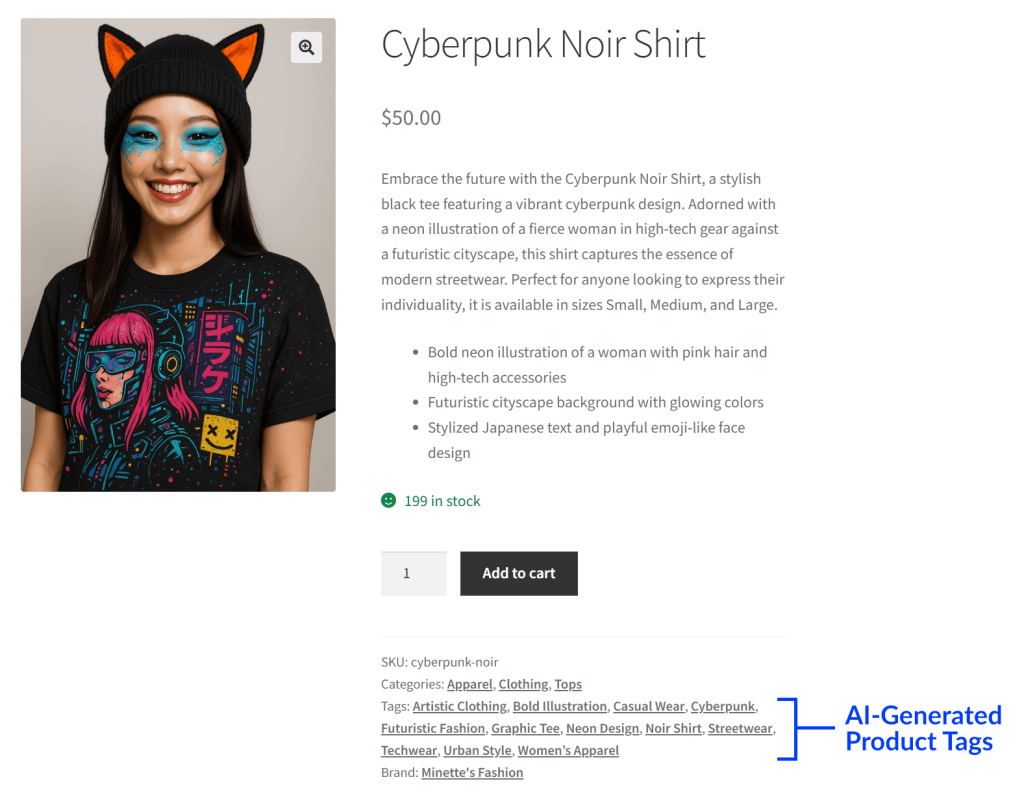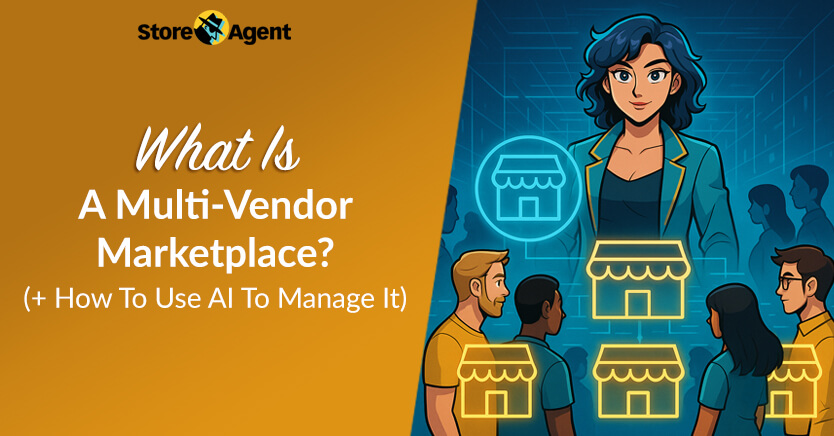
What is a multi-vendor marketplace?
If you’ve ever felt limited by how many products you alone can sell, you’re not the only one. Many store owners hit a ceiling. Too few products, too much pressure to fulfill every order, the burden of managing inventory, and the challenge of marketing every single item themselves.
A multi-vendor marketplace shifts that weight. Instead of doing it all, you can invite other sellers to list their products, giving your store more variety, shared responsibility, and greater reach without growing your to-do list.
In this article, we’ll explore how multi-vendor marketplaces work and what benefits to expect. Furthermore, we’ll show you how AI tools can help make marketplace management easier and more effective.
So let’s start!
- I. What Is A Multi-Vendor Marketplace?
- II. How Does A Multi-Vendor Marketplace Work?
- III. What Are The Advantages Of The Multi-Vendor Marketplace Model?
- IV. What Can AI Do For A Multi-Vendor Marketplace?
- Conclusion
I. What Is A Multi-Vendor Marketplace?
A multi-vendor marketplace is an ecommerce platform where many sellers can list and sell their products in one place. Basically, it works like a digital shopping mall, with each vendor owning their own little shop inside.
In a traditional store, there’s just one seller offering all the items. But in a multi-vendor setup, customers can buy from different vendors in a single order. From experience, it’s like walking through a big market where every stall has something unique.
The marketplace owner invites vendors to join the platform. In other words, the owner doesn’t do any selling; the vendors do the actual selling, each running their own small shop inside the marketplace.
While the marketplace owner manages the platform, the vendors handle their own products, prices, and sometimes shipping. This setup gives shoppers more variety without needing one person to do all the work.
Popular examples of multi-vendor marketplaces include Amazon, Etsy, and eBay. These platforms bring sellers and buyers together under one roof.
Running a marketplace like this can be a lot of work, though. That’s where a powerful tool can come in handy.
📝 Take note: A WooCommerce plugin called WC Vendors makes it easier to create, launch, and manage online marketplaces. Explore its features or download it for free if you want to try it out!
See real examples of WC Vendors at work here, here, and here!
II. How Does A Multi-Vendor Marketplace Work?
A multi-vendor marketplace has a few moving parts. Each one helps keep the store running smoothly.
1. The admin runs the platform
The marketplace owner is the admin. They take care of signups, settings, and tools that keep things working.
Moreover, they recruit the vendors who will sell on the platform.
2. Vendors sell products
Vendors are the sellers. Each one manages their own items, prices, and sometimes shipping. They use the marketplace like a shared space to reach customers.
Typically, each vendor has their own store page within the marketplace, where buyers can view just their products.
3. Vendor recruitment
Most marketplaces use a vendor registration form. Vendors fill it out with details about their store and products. Then, the owner reviews these forms to decide who’s a good fit for the platform.
Vendors who don’t meet the standards may be rejected. Meanwhile, approved vendors can join the marketplace and start selling.
4. Listings and rules
Vendors usually follow some basic rules for posting items. For example, they may need to write clear product descriptions or avoid certain product types.
Some platforms let the admin approve listings first before they go live.
5. Buyers place orders
Buyers can move from one vendor to another, browsing their individual products. They can add items from different vendors to one cart and check out in a single order. Then, the platform splits the order so each vendor gets only what they need to ship.
6. Payouts and commissions
After a buyer pays, the platform takes a small cut. The rest goes to each vendor. This cut is the admin’s share, often called a commission.
For example, if the commission rate is 10% and a product sells for $50, the admin keeps $5. Then, the remaining $45 goes to the vendor. Basically, this is one of the most common ways marketplaces and their vendors earn money.
7. Customer service and support
Buyers may contact the vendor for order issues. However, the admin often steps in if something serious comes up.

From what we’ve seen, this setup keeps things fair and clear for everyone involved. Each role matters and helps the marketplace grow.
III. What Are The Advantages Of The Multi-Vendor Marketplace Model?
Some store owners prefer running a multi-vendor marketplace instead of a regular store. This model gives them more flexibility and less day-to-day work. It also opens the door to new ways of earning.
Here are the various benefits you can expect as a multi-vendor marketplace owner:
1. Multiple revenue sources
Admins earn a share from every sale through vendor commissions. Some platforms also let them charge extra fees, like listing or subscription fees.
2. Wider product variety without stocking inventory
Because vendors handle their own items, the marketplace can offer more products without the owner storing anything. It’s like running a giant store without owning the shelves.
3. Shared responsibility
Each vendor handles their own listings, pricing, and shipping. Therefore, the admin doesn’t have to answer every buyer’s message or pack every box.
4. Shared marketing
Marketing doesn’t fall only on the marketplace owner. After all, vendors can promote their own storefronts too. This means more eyes on the site without the admin having to run every campaign.
5. Built-in audience growth
As more vendors join and share their shop pages, the marketplace reaches more buyers. Everyone benefits from the traffic, not just one seller.
6. Room to grow
Owners can start small and slowly add vendors over time. The model scales without needing to hire a big team.
This setup gives store owners a way to grow their business with less risk. They can focus on managing the platform while sellers do what they do best.
7. Fewer product headaches
Since vendors control their own stock and descriptions, the admin doesn’t need to worry about product accuracy or inventory updates.
8. Niche flexibility
The marketplace can stick to one niche or branch out into different ones. It works for handmade goods, digital files, clothing, and more.
9. Opens doors to partnerships
Some vendors bring their own audience, so the marketplace gets extra exposure. It can feel more like a team effort than a solo business.
IV. What Can AI Do For A Multi-Vendor Marketplace?
What is a multi-vendor marketplace without a steady flow of tasks? Admins and vendors deal with tons of small jobs every day, such as writing descriptions, replying to customers’ questions, updating product pages, and more.
The best part is that adding AI to your website is no longer a complicated, months-long project. With modern tools, you can integrate smart features into your marketplace quickly and start seeing results almost immediately.
StoreAgent is a suite of AI tools designed to automate and simplify tedious yet crucial ecommerce tasks. Thus, it allows vendors and admins to focus on more important things, such as selling and growing the platform. It’s like having a smart assistant that works around the clock.
Here are some ways StoreAgent’s AI tools can help grow your marketplace.
1. Crafts descriptions for products and categories
Writing descriptions takes time. It’s even harder when there are dozens or hundreds of items.
StoreAgent gives vendors a way to speed this up. It includes AI tools that write product descriptions, short summaries, and category blurbs.
Product Description AI writes compelling, natural-sounding, and detailed long descriptions for your offerings. All you have to do is provide it with details like product features, target audience, keywords, and the like. Within seconds, the AI uses all this information to generate a ready-to-use description. Vendors can also tweak the result to match their store’s tone.
Product Summaries AI writes short descriptions that quickly grab attention and highlight what makes each item special. These blurbs appear at the top of the product page and give shoppers a quick reason to stay. They work alongside long descriptions to improve clarity and help buyers make decisions faster.
Category Description AI examines what’s in a product category and other details you provide. Then it creates a short, clear summary that helps shoppers know what to expect. Vendors save time while making it easier for customers to browse and find the right pages.
Studies show 87% of consumers consider product descriptions essential when deciding what to buy. Therefore, using the above tools not only saves time and helps each store look clean and professional; it can also boost traffic and make it easier for shoppers to buy.
2. Summarizes reviews for better customer trust
Buyers often scan reviews to see if a product is worth it. But if a product has hundreds of reviews, that can mean a lot of reading. This can increase option paralysis and confusion for the customer, especially if the reviews are mixed or long-winded.
Review Summaries AI solves this by pulling out the main points buyers keep repeating. It highlights patterns, like what most people liked or didn’t like, and turns them into a short, easy-to-read summary. Shoppers can quickly understand the overall feedback, skip the review overload, and make decisions without second-guessing.
As of 2024, 79% of consumers said they trust online reviews just like they would a friend’s suggestion. That’s why it’s so important to present feedback in a way that’s quick to understand and easy to trust.
3. Replies to customers’ questions about products
Vendors often receive many product questions each day. Answering them all can be time-consuming and repetitive.
Product Questions AI helps by writing quick, helpful replies based on product details and the question asked. It even learns from past answers to improve future replies. Thus, the more questions the AI sees, the smarter it gets.
Furthermore, vendors can feed the AI with info from various sources, allowing it to handle even the trickiest questions.
Answers can be published, either automatically or manually, so shoppers can quickly find the most common questions right on the product page. This saves time for everyone and helps buyers feel more confident.
Remember, 93% of shoppers are more likely to come back to businesses that respond quickly to customer needs. Thus, using AI to answer customer questions quickly is one of the smartest moves a marketplace can make.
4. Generates product tags
Adding the right tags to a product helps shoppers find it faster. But doing this manually takes time and can be easy to get wrong.
Product Tag Generator reads your product’s details and creates clear, SEO-friendly tags in seconds. It picks out the most useful keywords and makes sure every product is labeled consistently.
This improves your store’s search, filters, and overall organization. Vendors don’t have to guess or spend hours tagging each item, and customers get to what they want more quickly.
Why AI tools matter
In our work with ecommerce platforms, handling so many tasks manually takes up time and slows things down.
For example, mistakes slip in when people rush or get tired. But with AI tools like StoreAgent’s, operating a marketplace becomes easier and faster. After all, these tools take on the repetitive work. The result? Humans can focus on decisions that need more attention.
AI also helps reduce errors by using consistent logic and checking product data carefully. Over time, this makes the whole store run better. With fewer mistakes and more things done on time, the marketplace feels more organized and less stressful.
Instead of drowning in tasks, vendors and admins get a bit of breathing room. Thus, the day feels lighter, and the work becomes more manageable.
Conclusion
What is a multi-vendor marketplace, and why should you care?
It’s a powerful way to bring sellers together on one platform while you focus on growing the business. With the right tools and a little help from AI, you can manage tasks more efficiently, reduce errors, and create a better experience for vendors and buyers alike.
In summary, we explored the following concepts revolving around the question, “What is a multi-vendor marketplace?”
- What is a multi-vendor marketplace?
- How does a multi-vendor marketplace work?
- What are the advantages of the multi-vendor marketplace model?
- What can AI do for a multi-vendor marketplace?
Thinking of launching your own multi-vendor marketplace? Take a look at WC Vendors to see how it can transform your WooCommerce platform. And if you want a little help from AI, see how StoreAgent can make things even easier.
